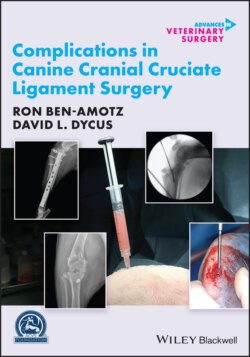Читать книгу Complications in Canine Cranial Cruciate Ligament Surgery - Ron Ben-Amotz - Страница 28
2.3 Environmental Factors 2.3.1 Sources of Contamination
ОглавлениеThe perisurgical environment, including the anesthesia prep area, patient transportation, the OR, the radiology suite and surrounding personnel, plays a role as a source of possible bacterial contamination. Bacteria most commonly identified in surgical sites at the time of closure during orthopedic surgeries arise from aersol transmission [47]. One study identified 81% of elective orthopedic procedures as experiencing some form of bacterial contamination [47]. Possible sources identified included surgeon hands, surgeon gloves, animal skin, patient footwrap, sink faucet, transportation gurney, radiology table, and OR computers [47]. Despite this high number of reported contamination events and numerous sources identified, a correlation with SSI could not be made [47]. Historically, scalpel blades have been suspected to be a source of increased bacterial contamination into deeper tissues when the same blade is used for skin incisions and deeper tissue incision; this remains unclear at this time, as conflicting data exist [48–50]. However, with documented potential for bacterial transmission from the skin blade, use of a second surgical blade for deeper tissues is advised. Suction tips have also been identified as sources of contamination in clean surgical procedures. In one study, a positive culture rate of 92% was identified at the end of clean surgical procedures, with a second study identifying a 42% positive culture rate at the end of clean orthopedic procedures [51, 52]. While these sources of contamination cannot necessarily be avoided, hospital surveillance of these known sources of contamination is recommended.
Figure 2.4 (a) Chlorhexidine gluconate 4% soap solution. (b) Povidone‐iodine 10% solution, with 1% free iodine.
